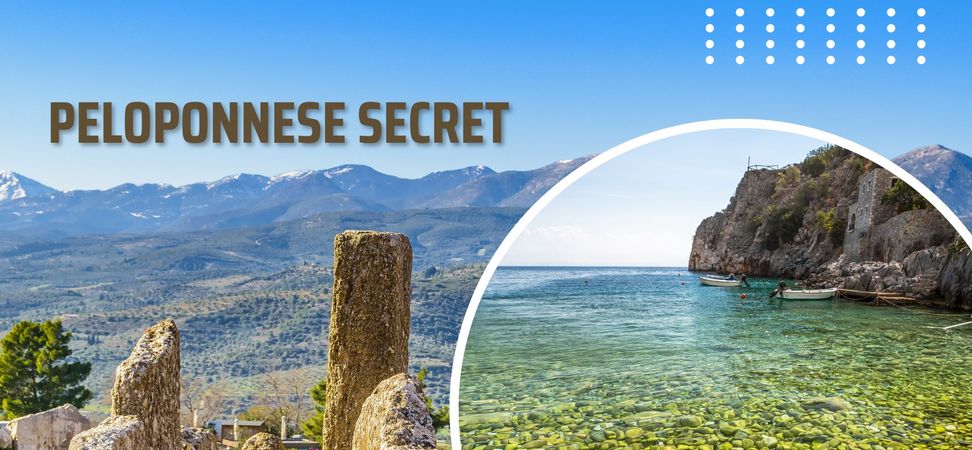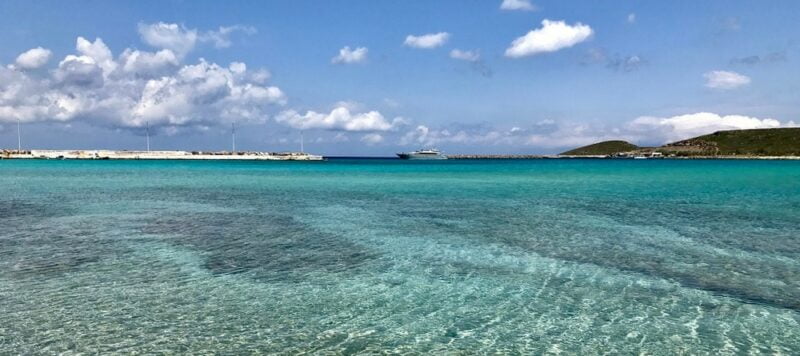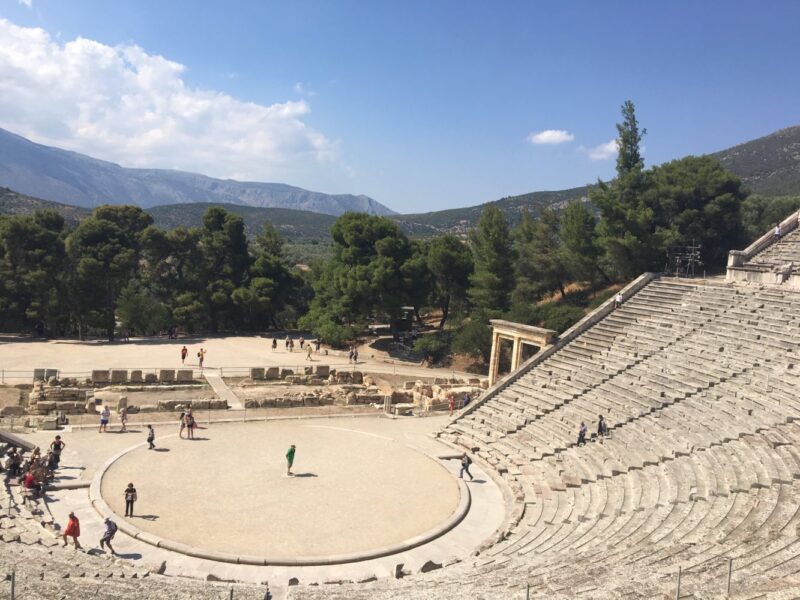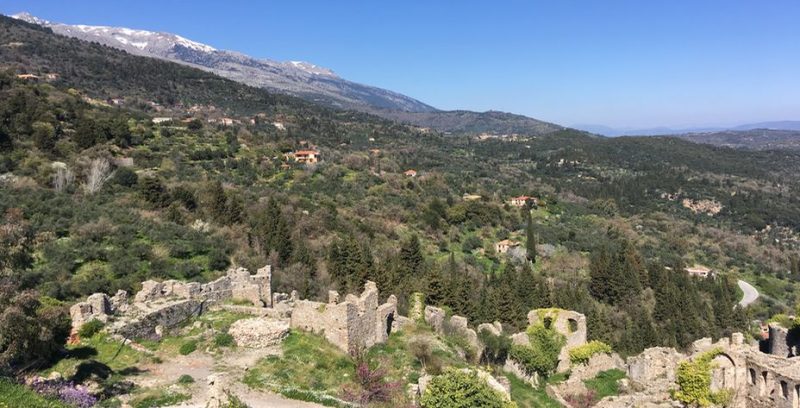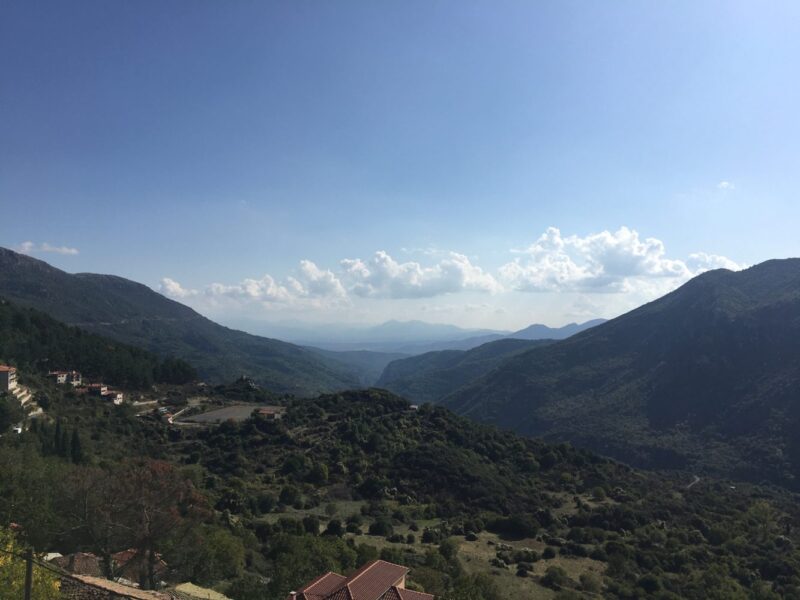You thought you’d seen it all in the Peloponnese? Not so sure! Alongside the must-see sites on the Greek peninsula, there are still a few hidden treasures that might just surprise you. So, whether it’s your first visit or you’re a Greece lover, dare to discover the Peloponnese off the beaten track! Here are 11 secret must-see sites to awaken your inner adventurer.
- 1 – The Methana peninsula and its volcano
- 2 – The Didyma sinkholes and their 2 chapels
- 3 – The Odontotos cogwheel train to cross the Peloponnese off the beaten track
- 4 – The hilltop village of Dimitsana and the monastery of Timios Podromos
- 5 – Gerakas fjord near Monemvasia
- 6 – The petrified forest of Agia Marina near Agios Nikolaos
- 7 – The island of Elafonissos and its white sandy beaches
- 8 – The ancient theater of Messène
- 9 – The fabulous Polylimnio waterfalls
- 10 – The cave church at Kefalari
- 11 – The sunken city of Pavlopetri off the coast of Laconia
- 12 – Saint Theodora’s Chapel in Arcadia
1 – The Methana peninsula and its volcano
Have you ever climbed to the top of a volcano? If you’re up for the experience, head for Methana, in the north-east of the Peloponnese. Located near Epidaurus and Poros, the Methana peninsula is home to an active volcano that’s fairly easy to climb. But rest assured, its last eruption dates back to the 3ᵉ century BC!
From the summit, you can admire spectacular volcanic landscapes. Then make a detour to the village of Kaimeni Chora to admire its crater. At 50 m deep and 100 m wide, it’s a unique testimony to the peninsula’s particular geology.
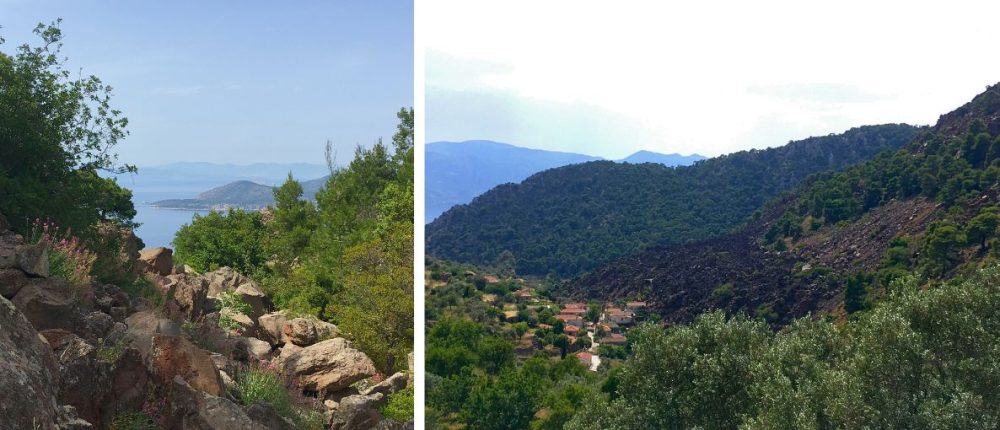
2 – The Didyma sinkholes and their 2 chapels
In the Ermioni area, another amazing geological phenomenon awaits you. A few kilometers from the village of Didyma, amidst olive groves, you can discover two gigantic craters created by a particular erosion phenomenon. They are known as Didyma dolines.
The larger of the two craters forms a natural amphitheatre. It is thought to have been inhabited since prehistoric times. The smallest has the distinction of housing two Byzantine chapels built under the rock: the Church of Saint George (Agios Georgios) and the Church of the Transfiguration of Jesus (Metamorphosis). A must-see on this off-the-beaten-track tour of the Peloponnese!
Good to know: The 2 dolines are freely accessible. The large crater is the least impressive. To visit the small crater, you have to go through the grey portal, then up a small staircase cut into the rock to descend to the interior of the sinkhole. You can then take a tour of the sinkhole and admire the charming chapels.
Travel Tip: While Google Maps can point you in the right direction, consider asking the friendly locals for specific directions. They might even share some fascinating stories about the dolines! Google Maps point

3 – The Odontotos cogwheel train to cross the Peloponnese off the beaten track
Do you like unusual train journeys? Come aboard the Odontotos train! This 19ᵉ century cog railway links the small seaside resort of Diakopto with the mountain town of Kalavryta.
This railroad line, inaugurated in 1896, is one of the narrowest in the world. Odontotos takes its name from the Greek word for tooth. In fact, the train is toothed to adapt to the ups and downs of the impressive terrain it traverses.
The 1.15-hour trip takes you up to 750 m above sea level. Enjoy a unique view of the splendid Vouraïkos gorges and the ancient Mega Spilaion monastery. At several points during the trip, you’ll have the sensation of being suspended in space!

4 – The hilltop village of Dimitsana and the monastery of Timios Podromos
Want to experience the authenticity of a small mountain village? Join the historic village of Dimitsana, in the north of the Peloponnese. Perched on a mountain ridge 950 m above sea level, it offers breathtaking views of Mount Taygetos and the Megalopoli plain.

The region is also famous for its monasteries dating back to the Middle Ages. The monastery of Timios Podromos (Moni Timiou Prodromou or Agios Ioannis Prodromos), built in 1166, lies near the beautiful nearby village of Stemnitsa. It is one of the largest and oldest monasteries in the Peloponnese. From the parking lot, it’s a 20-minute walk to the foot of this beautiful monastery built into the cliff. The monastery is closed between 1pm and 5pm. Opposite, you can see the remains of the Philosopher’s Monastery, dating back to 963.

5 – Gerakas fjord near Monemvasia
Did you know that Greece has its own fjord? The Gerakas fjord stretches its peaceful waters in Laconia, a few kilometers above Monemvasia.
This deep bay has a pretty little islet at its center. Migratory birds find refuge here, protected by an exceptional environment.
On the riverbank, the port village of Gerakas is sheltered from tourists. Here, you can enjoy a pleasant stroll and a good meal of fresh fish among the local visitors.

6 – The petrified forest of Agia Marina near Agios Nikolaos
There are several petrified forests in Greece, and they’re always a sight to behold. But the village of Agios Nikolaos is home to the most astonishing of all: the petrified palm forest of Agia Marina.
While most petrified forests have been frozen by volcanic eruptions, the one at Agia Marina has undergone mineralization. In other words, it was flooded 2 to 3 million years ago, and marine calcium deposits helped fossilize its trees.
As a result, the Agia Marina forest is a spectacular collection of natural sculptures, among which you can still find small fossils of molluscs and other marine animals.
7 – The island of Elafonissos and its white sandy beaches
Just a stone’s throw from the south of the Peloponnese, a well-hidden corner of paradise awaits you: the island of Elafonissos. This island of just 19 km 2 is undoubtedly one of the region’s most beautiful treasures!
The most striking thing about Elafonissos is the dazzling purity of the sea. The water is crystal-clear, ranging from turquoise blue to emerald green. This island is ringed by white sandy beaches of exceptional beauty, such as Simos, Kato Nissi and Lefki.
There’s no need to go to the tropics to feel at the end of the world: just discover the Peloponnese off the beaten track! Once you’ve experienced the beauty of Elafonissos, you’ll never want to leave!

8 – The ancient theater of Messène
Do you love archaeological sites, but not so much the hordes of tourists? To the north-west of Kalamata, the remains of ancient Messene lie hidden from the crowds, near the village of Mavromati.
This vast ancient city was the capital of today’s Messinia region. Surrounded by a 9 km wall, it features a sanctuary dedicated to Asclepius, an imposing stadium, an agora, a magnificent fountain and a large theater.
Built between the 3ᵉ and 2ᵉ centuries BC, the ancient theater of Messene was one of the most important theaters of antiquity. Although it has been partially destroyed, a visit to this unmissable treasure of Greek cultural heritage is well worth the detour!
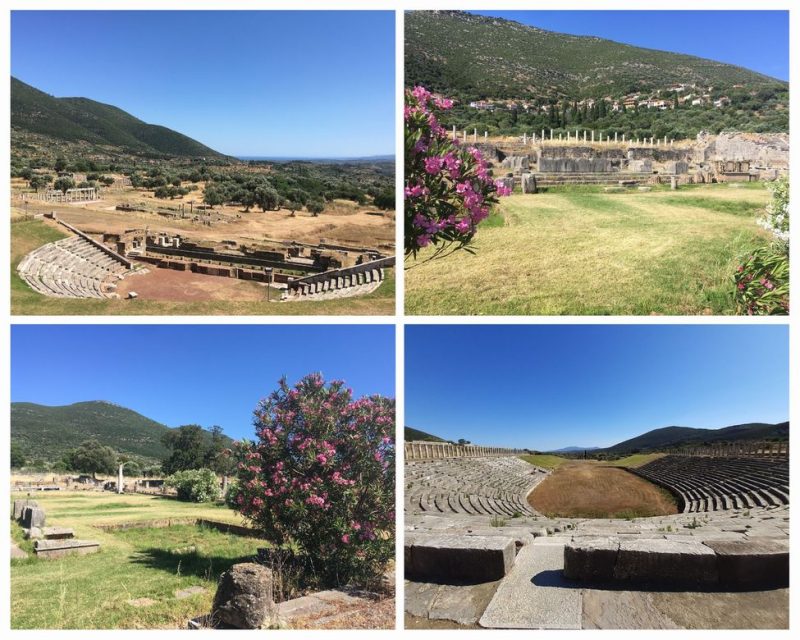
9 – The fabulous Polylimnio waterfalls
Sometimes all it takes is a short stroll through the forest to come across an exceptional natural site. Such is the case with the Polylimnio waterfalls, 30 km from Kalamata.
Near the village of Kazarma, in a wild green setting, some fifteen lakes shimmer in the shade of the trees. These crystal-clear pools are fed by several spectacularly beautiful waterfalls. If the coolness of the water doesn’t scare you, dare to take a dip in this miraculous oasis!

10 – The cave church at Kefalari
5 km from Argos, the small village of Kefalari is home to a very special church: the Church of Zoodochos Pigi. Built into a cave on the mountainside, the church overlooks the Erasinos river in the heart of a verdant landscape (which unfortunately regularly runs dry).
The part of the building built inside the grotto will astonish you with its sheer volume. Many icons still line the walls today. Don’t hesitate to go deeper into the bowels of the grotto after visiting the church!

11 – The sunken city of Pavlopetri off the coast of Laconia
Are you a scuba diving enthusiast? In the south of the Peloponnese, a well-hidden treasure will amaze you: the sunken city of Pavlopetri.
Dating back some 5,000 years, Pavlopetri is one of the world’s oldest underwater cities. It was submerged by several earthquakes around 1000 BC. Since then, its remarkably well-preserved remains have formed a reef where exceptional marine fauna thrives.
Exploring Pavlopetri is like diving into history. It’s also a unique opportunity to immerse yourself in one of the most important archaeological discoveries of our time.
12 – Saint Theodora’s Chapel in Arcadia
Nestled on the outskirts of the village of Vasta, near Megalopolis in the Peloponnese, the picturesque Saint Theodora’s Chapel is a true hidden gem. Built between the 10th and 12th centuries, this church is steeped in local tradition and fascinating legends. According to the tale, Theodora, a young girl from the region, sacrificed herself to protect one of the nuns from the monastery, becoming a martyr. Her last wish was that her grave would turn into a church, her hair into trees, and her blood into a river. As the legend goes, a powerful curse fell upon the monastery, which has remained abandoned ever since.
Today, near a river, you can admire a chapel whose walls and roof are pierced by 17 large trees. It’s a miracle it still stands! This enchanting place is well worth a visit to soak in its magical aura and Greek folklore.
*****
We hope this list of places to discover the Peloponnese off the beaten track has given you a few surprises! And if you’re looking to organize the ideal itinerary for visiting the Peloponnese, or if you’re looking for other sightseeing ideas, check out our articles :
- Road trip of a week or more in the Peloponnese
- Discover the must-sees in the Peloponnese
- And lots more ideas in our complete guide of the Peloponnese and also on our section dedicated to the Peloponnese.
Bon voyage!
Sandra B.
